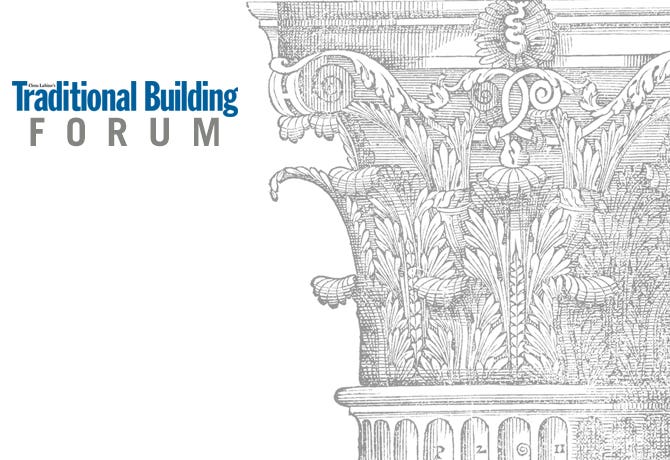
The Forum
Tax Credits Save History
By Robert J. Verrier, FAIA, and Michael D. Binette, AIA
The recent debate over historic preservation tax incentives is long on political orthodoxy but short on common sense. The knee-jerk response is to look skeptically at these as "tax breaks." In New York, Governor Andrew M. Cuomo has a bill on his desk to increase incentives for rehabilitating historic buildings that, though it was passed by the state legislature in June, has been derided by critics as "costly." In other states, vetoes and nay votes have been rationalized by saying that the tax credits are "unaffordable." In fact, historic tax credits in these states, as in others, would have no cost at all to taxpayers or state coffers. And from our experience, they actually create jobs and increase the tax base. What's the disconnect?
First, the state moves would make federal historic preservation tax credits easier to use, bringing home federal dollars. In some cases, the laws would make the credits available for smaller projects, such as townhouses in America's historic downtowns. More important, however, we would see more investment by private developers and many new construction jobs.
Long term, historic tax credits do even more. As architects and denizens of Boston – an American city rich in history and beautiful old buildings – we've seen the economic and social benefits of the credits grow exponentially over the years. They help us save our architectural heritage, of course – a gain that seems intangible until you look at a few examples of their use. The credits actually increase tourism, spur new private investment, and often set the stage for new commercial activity and development. The credits also help address crumbling eyesores in many communities that are actually diamonds in the rough.
Broken windows scare business away. But when abandoned buildings are brought back to life, and derelict properties are restored to their former grandeur, smart investors swoop in.
For example, in Dorchester, MA, the 1765 Baker Chocolate Factory – which was shuttered in 1969 – was reborn as a multi-family community of artists' lofts, affordable and market-rate apartments, and an assisted-living facility. The work took decades to complete. The result? Today, Dorchester Lower Mills is home to hundreds of new residents who enjoy a vibrant downtown with cafés, boutiques and a bustling grocery store. People visit for fun, ambiance – and history.
In this way, historic tax credits create a valuable commodity: hope.
More than that, the Dorchester factory buildings have historically been the visual gateway to the area. This is true in many towns and neighborhoods: The historic homestead, schoolhouse or town hall is an emotional anchor for the community, a reminder of their pivotal role in the area's development, affecting families and businesses.
In Boston, we recently adapted the former Boston Police headquarters, constructed in 1925, into the four-star boutique Back Bay Hotel. The restored Italian Renaissance Revival gem was paired with a new 11-story addition, adding much needed room yield, conference space and a restaurant in the heart of Boston's fashionable Back Bay neighborhood. Another development, Avalon Danvers in Danvers, MA, saved the historic 19th-century Kirkbride Building – a large, ornate Victorian-Gothic affair built as a state mental hospital – and made it the centerpiece of a master-planned community for 11 new buildings and 433 apartment dwellings. Once a ghost hunter's attraction, Avalon Danvers is now a bustling community.
Even old factory buildings, shuttered hospitals or schools are touchstones for their areas, and our architecture firm has spent four decades restoring and adapting these landmarks around the country. Each project celebrates – and serves as a reminder of – how the property contributed to the birth or growth of the place.
This matters to all Americans, and our politicians need to take note. These great buildings are part of the fabric and collective memory of our cities and neighborhoods. They root us to the place – and to U.S. history.
More so, these old buildings have great bones and can reinvigorate their neighborhoods once again. For the Baker Chocolate factory alone, the adaptive reuse saved tons of brick and granite block, and reused thousands of massive wood beams. (An entire old-growth forest was spared, as were local landfills.) The properties that receive historic tax credits bring their communities new uses, such as commercial, hospitality, residential and civic amenities. In this way, these historic structures bring places back to life.
Proof of the attraction and economic value of historic preservation is everywhere. Our clients and the mayors, real estate developers, bankers, and end-users involved in historic projects by The Architectural Team will attest to the results.
In part, we need to thank the federal and state historic tax credit programs for giving these projects a push. The benefits run the gamut from commercial success to cultural conservation to even environmental advantages. In terms of sustainability and environmental impact, after all, preservation is the greenest thing we can do.
More than that, tax credits are an easy, low-cost path to preserving our rich architectural heritage for years to come. Our country's history deserves better than a wrecking ball. If you believe in America's past – and our chances for a better collective future – historic tax credits are something you should believe in, too. TB
Robert Verrier, FAIA, NCARB, and Michael Binette, AIA, NCARB, are partners at The Architectural Team, Inc., a Boston-based architecture firm specializing in master planning, hospitality, mixed-use, multi-family housing and historic preservation and adaptive reuse. The Architectural Team has completed more than 150 projects restoring buildings, many of which may be found on the National Historic Register. For more information, visit www.architecturalteam.com.








